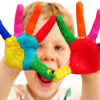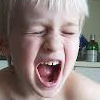All children behave badly from time to time, and many do so more often that, yet only a small percentage of the infant and adolescent population are diagnosed with a clinical behavioral disorder. The difference is that the children affected by a real disorder display relentless, intense behavioral problems over a long period of time that are resistant to usual parenting tricks and techniques. These children require psychological attention.

Prominent behavior disorders may make public outings a challenge. Image credit: Christine Szeto
Exact causes of this branch of disorders have yet to be identified with any certainty, though physiological imbalances are suspected by some. Contributing factors, on the other hand, have been offered up in abundance - parental neglect, domestic abuse, too-strict parenting, poor sibling relations, pressure to perform, shifts in family structure, school stress, other disorders such as depression or anxiety, lack of supervision, exposure to violence or trauma, bullying, family history of behavioral disorders, peer pressure and even bad diet or sleep deprivation have all been suggested. 1 2 3
The most common of these disorders are:
- ADHD (Attention-Deficit/Hyperactivity Disorder
- Oppositional Defiant Disorder
- Conduct Disorder
They have their individual treatments prescribed and the route taken to help the patient depends very highly on that patient and their support network and home-life. However, there are general techniques in anger management, conflict resolution and communication skills that are provided alongside parenting instruction where necessary which can prove to be the first steps in successful treatment of a behavior disorder.
References:
1. Centre of Knowledge on Healthy Child Development (2007). BEHAVIOUR PROBLEMS IN CHILDREN AND ADOLESCENTS. [ONLINE] Available at: http://www.kidsmentalhealth.ca/documents/Res_KnowledgeCentre_Beh_Eng_B_W.pdf. [Last Accessed 11.12.13].
2. Dr. Laurence Knott (2012). Psychosocial Disorders. [ONLINE] Available at: www.patient.co.uk/doctor/common-behavioural-problems-in-children. [Last Accessed 11.12.13].
3. D.D. Smith (2010). Emotional and Behavioral Disorders: Causes and Prevention. [ONLINE] Available at: www.education.com/reference/article/emotional-behavioral-disorders-prevention/. [Last Accessed 11.12.13].
© BrainMass Inc. brainmass.com April 25, 2024, 12:48 am ad1c9bdddf

